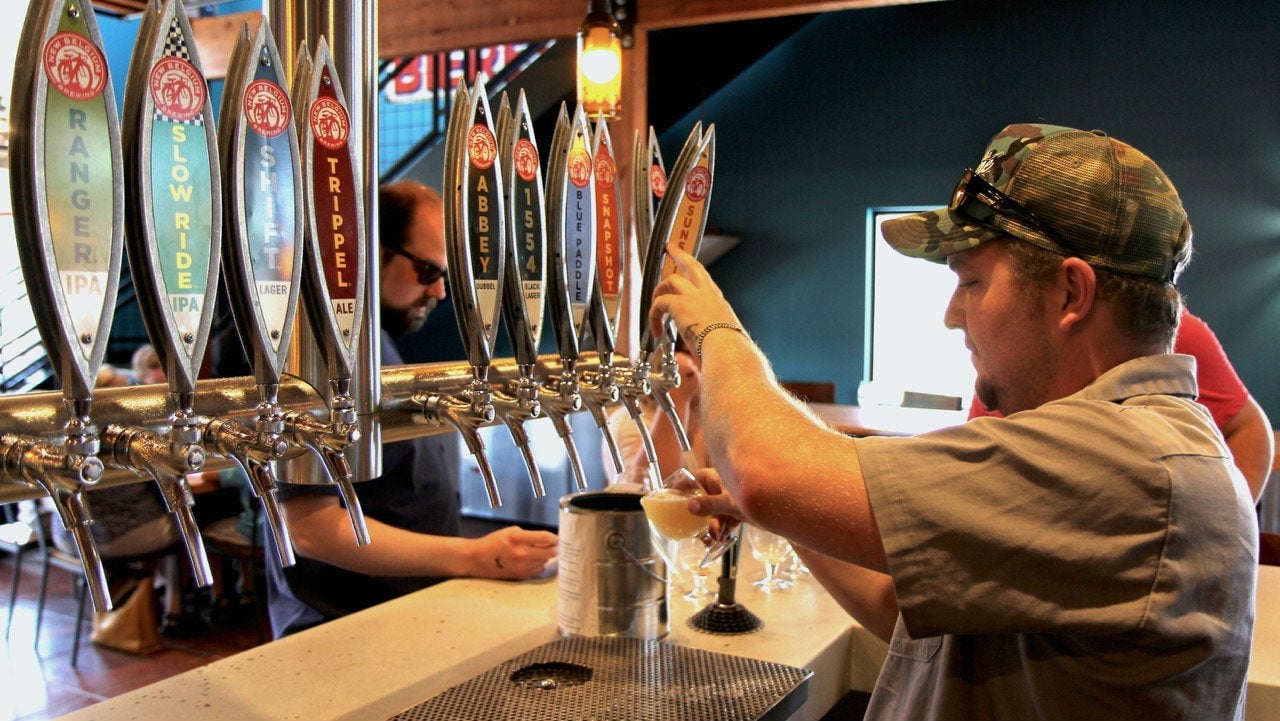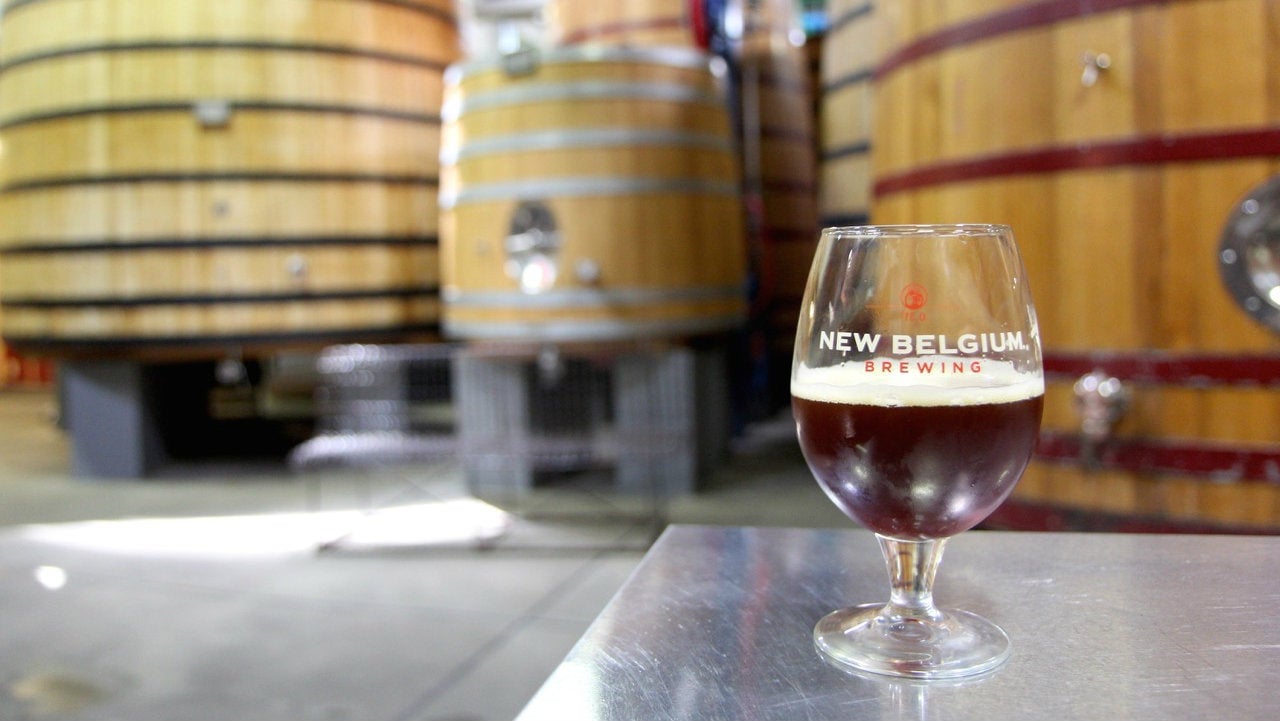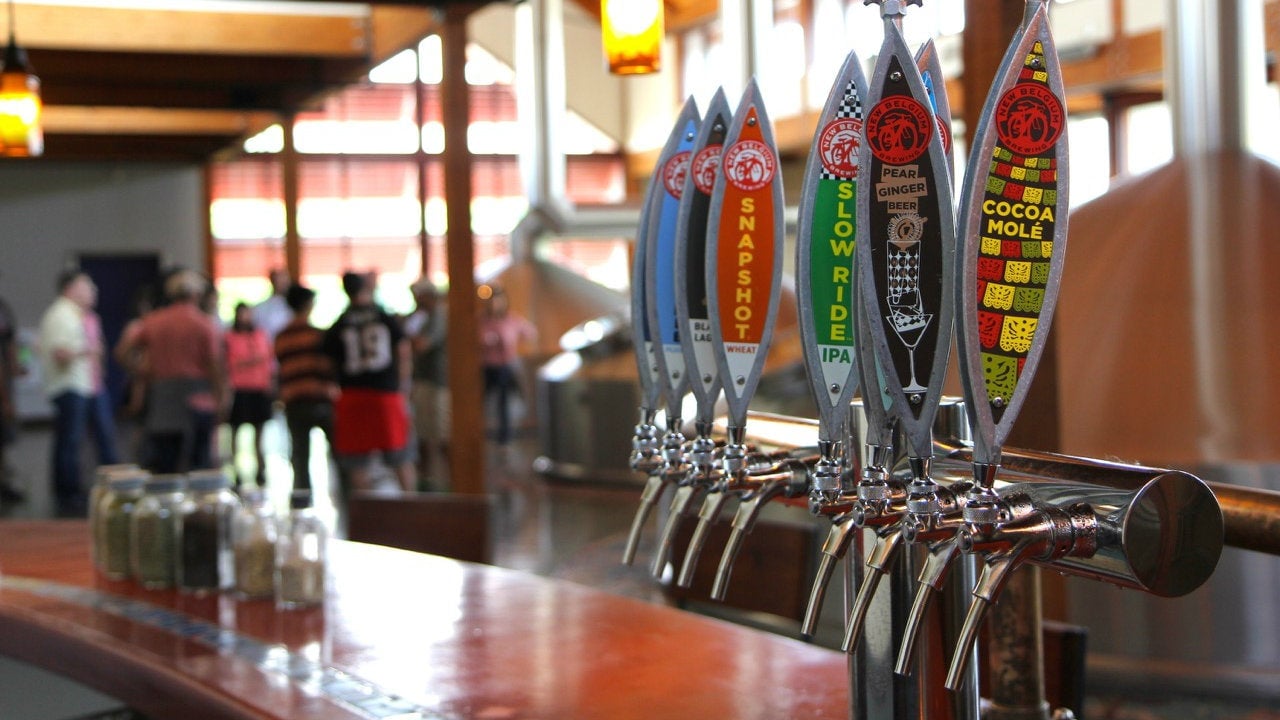‘Craft beer’ isn’t what you probably think it is
How is craft beer, a term seemingly synonymous with “scarce” or “artisanal” brew, somehow sudsing one in every ten pint glasses in the US? These days bars, restaurants, supermarkets, and bodegas all stock those cleverly-named, colorfully-labeled brews, complementing the Buds, Sams, and Stellas in the cooler. How do these places keep these special brews in stock? It turns out craft has little to do with size. The Brewers Association (B.A.) merely requires that a brewery produce fewer than six million barrels a year to qualify as “craft.” That’s 1.98 billion bottles, a volume achieved only by the world’s largest international mega-conglomerate brewers. So, size clearly isn’t everything.


How is craft beer, a term seemingly synonymous with “scarce” or “artisanal” brew, somehow sudsing one in every ten pint glasses in the US? These days bars, restaurants, supermarkets, and bodegas all stock those cleverly-named, colorfully-labeled brews, complementing the Buds, Sams, and Stellas in the cooler. How do these places keep these special brews in stock? It turns out craft has little to do with size. The Brewers Association (B.A.) merely requires that a brewery produce fewer than six million barrels a year to qualify as “craft.” That’s 1.98 billion bottles, a volume achieved only by the world’s largest international mega-conglomerate brewers. So, size clearly isn’t everything.
Yet the craft designation isn’t entirely meaningless. Pabst—the hipster favorite, which brews just under three million barrels per year—can’t call itself “craft,” for example. PBR contains corn syrup, a “non-traditional” ingredient. Disqualified. What about Widmer Brothers Brewery, or Kona Brewing Company—both owned by Craft Brew Alliance, a company that produces fewer than 750,000 barrels per year? Nope: Anheuser-Busch InBev owns more than 32% of C.B.A. Another DQ.
So if craft isn’t just about volume or cute packaging, what does it mean?
Fortunately, the term is a lot less confusing to actual independent craft brewers. Poised to produce just under one million barrels in 2015, New Belgium Brewing Company is anything but “small” when compared with the 3,000-plus US craft breweries, which will produce fewer than 50,000 barrels during the same time. Yet, there is no doubt amongst its peers and patrons that New Belgium is, indeed, the fourth largest American “craft” brewery—perhaps because craft has less to do with numbers and everything to do with philosophy.
Founded in Fort Collins, Colorado, in 1991 by homebrewer Jeff Lebesch and his wife Kim Jordan (since divorced), New Belgium was built on personal values that supersede bottom line finances. Lebesch left in 2001, but Jordan—the company’s first bottler, sales rep, distributor, marketer, financial planner, and current CEO—maintains that she and Lebesch laid out a manifesto right from the start: “It was pretty simple: to be environmental stewards, to produce world-class beer, to have fun, and to promote beer culture.”

To this day, the brewery’s cultural traditions appear to remain unshaken. Venture into New Belgium’s facility in the morning, and the aroma of hops will lead you to one of hundreds of colorful bicycles scattered around the property, each a representation of Lebesch’s initial brewery-inspiring bicycle trip through Belgium. In the afternoon, the scent of cooked cereal signals workers to gather in the break room or at the bar for a 5p.m. “shiftie” (a post-shift beer), at the volleyball courts for a friendly game, or down by the track to compete in bike races.
Meanwhile, the company has remained true to its environmental commitments, enumerated on a website that provides extensive information about the brewery’s ecological impact, including an annual sustainability report revealing metrics on water management, greenhouse emissions, and waste diversion. Most famously, Jordan and the other shareholders sold New Belgium to their co-workers via an employee stock ownership plan (ESOP) in the last days of 2012, as a means of giving back to those who helped build the brand—and as a means of insuring the future of the company long after Jordan is gone. Certified by the nonprofit B Lab as a “B Corp” that must “meet rigorous standards of social and environmental performance, accountability, and transparency,” the ESOP won’t allow New Belgium’s employee-owners to abandon their charitable obligations.
Of course, none of these ideals upstages the beer itself. Jordan points out that the industry definition of “craft”—one that she helped create as a board member of the Brewers Association—means less to brewers than the innovation-promoting culture that encourages imaginative new products. New Belgium has an entire line of experimental beers called Lips of Faith, which includes a coconut curry hefeweizen and Wild2 Dubbel, brewed with schisandra, the “five-flavor fruit.” For Jordan, there seems to be nothing more fun than taking a risk on an adventurous new recipe.
Well, almost nothing: many of these peculiar beers are produced collaboratively with other breweries, allowing for good-humored camaraderie. What does such a big business have to gain from working with and promoting a smaller competitor? Everything, actually: collaboration is the social and economic lifeblood of craft brewing culture. Sure, collaborating with smaller independent breweries builds a level of respect amongst craft beer fans that eventually translates to financial gains. But Jordan points out that collaborations more importantly provide “creative sparks,” inspiring new ideas that could be realized independently long after the two breweries have parted ways.

“Maybe one of our brewers knows someone at Three Floyds (brewery) really well because they worked there, or they went to school together, or they did some event together years ago,” she explains of the process. “One night [they’re] drinking a beer together…and they start riffing about what might be fun [to create together], and a beer comes out of that.” Collaborations are natural and expected in such a tight-knit community of independent brewers—large and small.
However, in working with so many brewers over the years, Jordan knows the difference between passionate artisans and opportunists merely in it for money. “I like hanging out with people who are into the industry…and goofing off more than I’m interested in people who want to talk about market share, EBITDA, or the impending threat of a raw materials shortage,” she says. ”I mean, we’re all conversant in that language, but it doesn’t make my heart sing the way talking about Sorachi Ace hops does, for instance.”
The number of business-first brewery owners has only accelerated amidst the recent craft beer explosion. Over 22 million barrels of craft beer were produced in 2014, up nearly 70% from 2012, and 160% from 2008. The boozy gold rush has led to everyone from ex-bankers to ex-marketing gurus opening up breweries to cash in, though Jordan is not deterred: “This is not the first wave of people coming into the industry who think, ‘This will be a really great way to make a big sale.’ It’s happened before and I think we’ll see it again. But there’s a strong and steady core of people who are in this industry because they love beer and…the idea of the creative endeavor.”
Of course, as New Belgium grows, the brewery has to make adjustments. “For instance, we used to have more yeast in our beers,” Jordan points out, referring to a time before New Belgium filtered its products for stability and freshness—adjusted for long travel time and shipping distances. “We want to do everything on our end to make sure that the beer arrives in [the best shape] it can. So, over the years we’ve streamlined or changed our process here or there to make sure that that happens.”
New Belgium continues to expand by following its larger and smaller west coast craft beer peers to Asheville, North Carolina. Both Sierra Nevada Brewing (producing one million barrels in 2014) and Oskar Blues (149,000 barrels in 2014) have already established secondary facilities in the area. But, despite approaches from larger breweries attracted to New Belgium’s growth, Jordan has thus far had no intention of fostering a sale of the employee-owned business to an international behemoth conglomerate, like Anheuser-Busch InBev or SABMiller. “I don’t see that as a route that’s realistic for New Belgium,” she says, “and I don’t think my co-workers do either.”
Any beer, it turns out, can have a funny name and a pretty label. And there are some real, if loose, rules determining what can be called a “craft” beer. But in the end, what makes a craft brewery, other than what it pours into the bottle, is what it pours into thousands of decisions large and small, about what kind of company will fill those bottles in the first place.